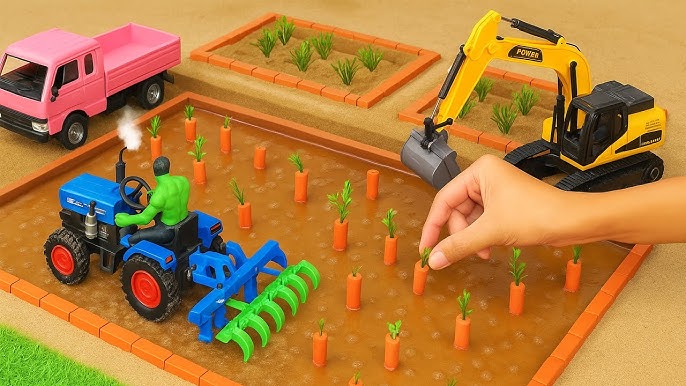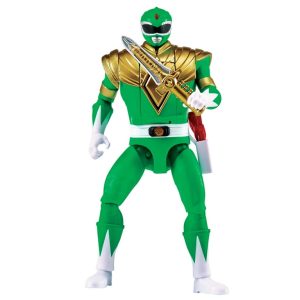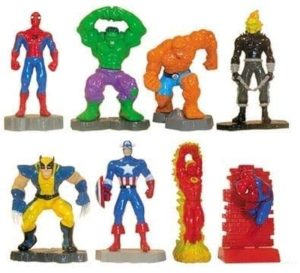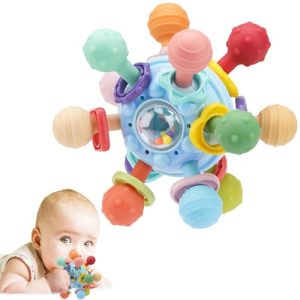Are you looking for a fun and rewarding project that brings joy to your home? Building a wooden toy farm with your own hands is the perfect way to create something special for your kids—or even for yourself.
Imagine the satisfaction of watching your little ones play with handcrafted animals and barns, knowing you made it all from scratch. This DIY project not only sparks creativity but also offers a hands-on experience that connects you with your family in a meaningful way.
Keep reading, and you’ll discover easy steps, helpful tips, and inspiring ideas to bring your wooden toy farm to life. Your next favorite project starts here!
Choosing The Right Wood
Choosing the right wood is key for your wooden toy farm project. The wood must be safe, durable, and easy to work with.
Picking good wood helps make toys that last and are safe for children. This guide will help you choose the best wood.
Types Of Wood For Toys
Some woods are better for toys because they are strong and smooth. Soft woods can dent easily, but hard woods last longer.
- Maple: Hard and smooth, good for detailed parts
- Beech: Strong and fine-grained, easy to sand
- Birch: Light color and sturdy, popular for toys
- Alder: Soft but stable, easy to carve
- Cherry: Durable and has a nice color
Safety Considerations
Wood for toys must be non-toxic and free from sharp edges. Avoid woods that cause allergies or splinters easily.
Sand the wood smooth and use child-safe finishes. This keeps the toy safe for little hands and mouths.
- Use wood without toxic sap or oils
- Sand all surfaces to remove splinters
- Use water-based, non-toxic sealants
- Avoid woods that may cause allergies
Sustainable Sourcing
Choose wood from sources that protect forests. Sustainable wood helps keep nature safe for future generations.
Look for wood labeled as FSC certified or reclaimed wood. These options reduce environmental impact.
- FSC certified wood ensures responsible forest management
- Reclaimed wood reuses old materials
- Local wood reduces transportation emissions
- Avoid endangered or rare tree species

Credit: www.youtube.com
Essential Tools And Materials
Creating a wooden toy farm requires the right tools and materials. These help you build safe and fun toys.
Using proper tools makes your work easier and more accurate. Materials affect the toy’s look and durability.
Basic Woodworking Tools
Start with simple woodworking tools to cut and shape wood. These tools help you build pieces with care.
- Hand saw for cutting wood to size
- Sandpaper or sanding block to smooth edges
- Clamps to hold pieces together while gluing
- Measuring tape or ruler for accurate cuts
- Pencil for marking wood before cutting
- Wood glue to join parts firmly
Painting And Finishing Supplies
Painting makes the toy farm colorful and fun. Finishing protects the wood from damage.
- Non-toxic paints safe for children
- Paintbrushes in various sizes for details
- Clear wood finish to protect paint and wood
- Rags or cloths for wiping excess paint
Safety Gear
Safety gear protects you during the project. Always wear safety items to avoid injuries.
- Safety glasses to protect your eyes
- Dust mask to avoid breathing sawdust
- Work gloves to protect your hands
- Ear protection if using loud tools
Designing Your Toy Farm
Creating a wooden toy farm is a fun way to bring play and learning together. Design your farm to be simple and easy to use for kids.
Think about the shapes, sizes, and pieces you want before you start building. This helps make the project smooth and enjoyable.
Sketching Simple Layouts
Start by drawing a simple plan of your farm. Use basic shapes to mark where the fields, barns, and roads will go. Keep the design clear and not too crowded.
- Draw squares for barns and houses
- Use rectangles for fields and fences
- Circle areas can be ponds or animal pens
- Connect areas with lines to show paths or roads
Selecting Farm Elements
Choose which parts of the farm you want to include. Think about animals, buildings, and tools that will make play fun and realistic.
| Farm Element | Purpose | Material Needed |
| Barn | Store animals and tools | Wood blocks |
| Fences | Separate fields and animals | Wood sticks |
| Tractor | Help with farm work | Small wood pieces |
| Animals | Farm life representation | Carved wood or painted shapes |
Scaling For Play
Make sure all parts fit well together. The size should be good for small hands to hold and move the pieces easily.
- Keep buildings and animals about the same size
- Make paths wide enough for toy tractors
- Use thick wood for durability
- Leave space for kids to add their own ideas
Building The Playset Components
Building a wooden toy farm playset is a fun and creative project. It involves making different parts that fit together to create a farm scene.
This guide explains how to cut wood, put parts together, and add moving pieces to your playset.
Cutting And Shaping Wood
Start by choosing smooth wood pieces like pine or birch. Use a saw to cut shapes for the barn, fences, and animals.
Sand all edges to make the pieces safe for children. Shape parts with a file or sandpaper for smooth curves.
- Measure and mark wood before cutting
- Use a fine-toothed saw for detailed cuts
- Sand edges to avoid splinters
- Shape rounded parts for a friendly look
Assembling Structures
Use wood glue and small nails to join the cut parts together. Start with the base, then add walls and roof pieces.
Make sure each piece fits tightly. Check that the structure is stable and strong enough for play.
- Apply wood glue on edges before joining
- Use clamps to hold parts while drying
- Hammer small nails for extra strength
- Build in layers: base, walls, roof
Adding Movable Parts
Add doors, windows, or gates that can open and close. Use small hinges or wooden pegs for movement.
Test each moving part to ensure it works smoothly and is safe for kids to use.
- Attach hinges with small screws or nails
- Use wooden dowels for rotating parts
- Check that parts move without sticking
- Secure loose parts to avoid choking hazards
Painting And Decorating
Painting and decorating your wooden toy farm brings it to life. It makes each piece look fun and unique.
Use safe materials and simple techniques to keep the project enjoyable for everyone.
Choosing Non-toxic Paints
Pick paints that are safe for children and the environment. Non-toxic paints have no harmful chemicals.
- Look for water-based paints
- Check labels for safety certifications
- Avoid paints with strong odors
- Choose bright colors that dry quickly
Detailing Farm Animals And Buildings
Add simple details to animals and buildings to make them look real. Use small brushes for fine lines.
| Object | Detail Ideas | Colors |
| Cow | Spots, eyes, nose | Black, white, pink |
| Barn | Windows, doors, roof lines | Red, white, brown |
| Chicken | Feathers, beak, eyes | Yellow, red, orange |
Sealing For Durability
Seal your painted wooden toys to protect colors and wood. Use a non-toxic sealant that is safe for kids.
- Choose a water-based clear sealant
- Apply thin coats and let dry fully
- Sand lightly between coats if needed
- Allow sealant to cure before play
Safety Tips For Handmade Toys
Making wooden toys at home can be fun. Safety should always be the priority. Here are some tips to ensure that your DIY wooden toy farm project is safe for children.
Focusing on safety helps prevent accidents. This guide will help you create toys that are both fun and safe for play.
Smooth Finishes And Edges
Always sand the toys to remove rough spots. Smooth finishes prevent splinters and ensure a safe playtime.
Check all edges and corners. Round off any sharp edges to keep children safe from cuts.
- Use fine-grit sandpaper for a smooth touch
- Inspect the toy thoroughly after sanding
- Consider a non-toxic finish for extra safety
Avoiding Small Parts
Toys with small parts can be a choking hazard. Ensure all parts of your toy are large enough for safe play.
Test the toy by trying to pull off small pieces. If any parts come loose, reinforce them before giving the toy to children.
- Use large screws or nails for assembly
- Secure all joints tightly
- Regularly inspect for loose parts
Regular Maintenance
Check the toys regularly for wear and tear. Proper maintenance keeps the toys safe over time.
Repair any damages immediately. This prevents accidents and extends the life of your handmade toys.
- Inspect toys monthly
- Keep a repair kit handy
- Re-sand rough spots as needed
Personalizing Your Toy Farm
Creating a wooden toy farm can be a fun DIY project. Personalizing it makes it special and unique. You can add different elements to make it your own.
Here are some ways to personalize your toy farm. These ideas will help you add your personal touch.
Custom Colors And Themes
Choosing colors is a great way to personalize your toy farm. Pick colors that reflect your style and preference. This can make the farm stand out.
Consider using themes like a classic farm or a modern farm. Themes can guide your color choices and make your project cohesive.
- Classic farm with red barns and white fences
- Modern farm with pastel colors and sleek designs
- Nature-inspired with earth tones and greens
Adding Names And Labels
Names and labels can add a personal touch to your toy farm. You can label the barn or add names to the animals. This makes the farm feel more real.
Use simple labels for areas like the barn, pasture, and silo. Personalized names for animals can make the farm feel special.
| Area | Suggested Label |
| Barn | Old MacDonald’s Barn |
| Pasture | Green Meadow |
| Silo | Harvest Tower |
Incorporating Natural Elements
Adding natural elements can enhance the look of your toy farm. Use materials like wood, stones, and leaves. These elements can make the farm more authentic.
Consider creating small gardens or adding tiny trees. These details bring life to the farm environment and make it more interactive.
- Use small pebbles for pathways
- Add moss for a realistic touch
- Create mini gardens with tiny plants
Inspiring Play Ideas
Wooden toy farms offer many ways for kids to play and learn. They spark imagination and help children explore different roles.
These toys encourage creativity, teamwork, and problem-solving during playtime. Here are some fun ideas to try with a wooden toy farm.
Role-playing Scenarios
Kids can pretend to be farmers, veterinarians, or market sellers. Role-playing helps them understand farm life and animal care.
- Act out feeding the animals and cleaning the barn
- Hold a pretend farmer’s market to sell farm goods
- Play veterinarian to check the health of the animals
- Create a story about a day on the farm
Educational Games
Wooden toy farms can teach counting, sorting, and animal names. Use the toys to make learning fun and hands-on.
| Game | Learning Focus |
| Count the animals | Numbers and math |
| Sort animals by size | Grouping and comparison |
| Name the animals | Vocabulary and memory |
| Match animals to their food | Cause and effect |
Group Play Activities
Playing with others boosts social skills. Group play with a wooden toy farm encourages sharing and teamwork.
Try this fun group activity:
- Each child chooses a farm role.
- Work together to build the farm layout.
- Create a story where each role helps solve a farm problem.
- Take turns leading the group in different tasks.
Troubleshooting Common Issues
Building a wooden toy farm can be fun and rewarding. Sometimes, small problems occur during or after the project.
This guide helps you fix common problems easily. You can keep your toy farm strong and safe for play.
Fixing Loose Parts
Loose parts can make the toy unsafe or hard to use. Check all joints and connections regularly.
Use wood glue or small nails to tighten parts. Hold pieces firmly until glue dries to keep them secure.
- Apply wood glue on loose joints
- Clamp parts together while drying
- Use small nails or screws if needed
- Check parts after repair for stability
Repairing Paint Chips
Paint chips can make your toy look old and rough. Fix chips to protect the wood and keep it nice.
Lightly sand the chipped area to smooth it. Then, apply matching paint in thin layers for a good finish.
- Sand chipped spots gently
- Use paint that matches original color
- Apply thin paint coats and let dry
- Repeat if needed for full coverage
Enhancing Stability
Stable toys are safe and last longer. Check the base and connections to keep your toy firm.
Add extra supports or wider bases if the toy wobbles. Tighten screws and glue loose joints to improve strength.
- Inspect the toy base for balance
- Add wooden braces for extra support
- Tighten all screws and nails
- Glue loose joints firmly and clamp

Credit: www.youtube.com

Credit: www.youtube.com
Frequently Asked Questions
What Materials Are Needed For A Wooden Toy Farm Diy?
You need wood pieces, non-toxic paint, wood glue, sandpaper, and small nails. Choose safe, child-friendly materials for durability and safety.
How Long Does A Wooden Toy Farm Project Take?
Typically, it takes 4 to 6 hours, depending on complexity. Allow time for drying paint and assembling parts carefully.
Is This Diy Project Suitable For Beginners?
Yes, the project is beginner-friendly with clear steps. Basic woodworking skills and tools are sufficient to complete the toy farm.
Can I Customize The Wooden Toy Farm Design?
Absolutely, you can paint, add details, or resize parts. Customization makes the toy unique and tailored to your preferences.
Conclusion
Building a wooden toy farm brings fun and learning together. Kids enjoy playing with the animals and buildings they help create. This project teaches creativity and basic woodworking skills. It also gives a chance to spend quality time with family.
Simple tools and materials make it easy to start. A handmade toy farm lasts longer than store-bought ones. Try this project for a unique, joyful experience. Crafting with wood sparks imagination and builds happy memories. Give it a go and watch the fun grow.





